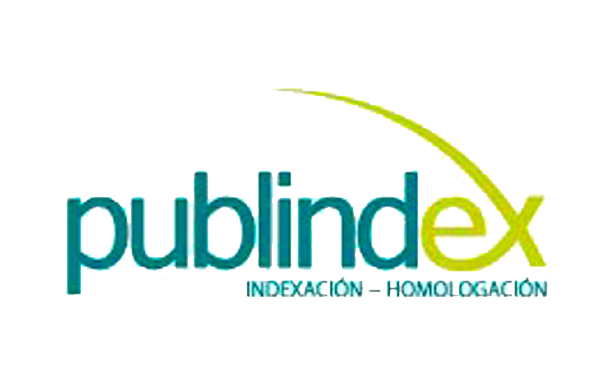The Role of the State in Youth Matters: Protection, Development and Attention
Copyright (c) 2022 Opinión Jurídica

This work is licensed under a Creative Commons Attribution-NonCommercial-NoDerivatives 4.0 International License.
- Articles
- Submitted: July 1, 2021
-
Published: March 8, 2022
Abstract
This work had as its main objective performing an analysis of the role of State in youth matters, both in the Mexican as in the Tabasquean contexts. To achieve it, this study employed a documentary methodology with social and demographic statistics as well as a review of scientific and judicial literature on youth with a predominantly social approach. These sources were contrasted and the study found that State has intervened in protection trough laws, in development with plans, and in attention through youth matters institutions. Their labour has not been enough to guarantee wellness among this population. The main conclusion of this text was that, more than vulnerable, youth is being vulnerated given how, despite being the population more actively seeking for and compromise with their health and own life, achieving it highly depends on others actions, i.e., the decision of youths is not enough for improving their situation because of a complex social reality that conditions their well-being, in which State is involved.
References
- Caricote, N. (2008). Cómo investigar sin complicaciones. Nancy Caricote Lovera. https://bit.ly/3FsOpSh
- Coordinación General de Vinculación con el Comité de Planeación para el Desarrollo del Estado de Tabasco. (2019). Guía para la Elaboración del Plan Estatal de Desarrollo 2019-2024. Gobierno del estado de Tabasco. https://tabasco.gob.mx/sites/default/files/users/planeacion_spf/ef-tabasco-01-1-1%20de%203.pdf
- Copladet. (2019). Formulación de los Programas Derivados del Plan Estatal de Desarrollo 2019-2024 Programas Sectoriales, Especiales, Especiales Transversales, Regional e Institucionales. Gobierno del Estado de Tabasco. https://tabasco.gob.mx/sites/default/files/users/planeacion_spf/Metodologia%20para%20los%20Programas%20derivados%20del%20PED%202019-2024.pdf
- Gobierno de México. (1998, 21 de diciembre). Ley del Instituto Mexicano de la Juventud. Diario Oficial de la Federación 06 de enero de 1999. http://dof.gob.mx/nota_detalle.php?codigo=4943094&fecha=06/01/1999
- Gobierno de México. (2019). Plan Nacional de Desarrollo 2019-2024. https://lopezobrador.org.mx/wpcontent/uploads/2019/05/PLAN-NACIONAL-DE-DESARROLLO-2019-2024.pdf
- Gobierno del Estado de Tabasco. (2019). Programa Sectorial Educación, Ciencia, Tecnología, Juventud y Deporte 2019-2024. https://tabasco.gob.mx/sites/default/files/users/planeacion_spf/PROGRAMA%20SECTORIAL%20EDUCACI%C3%93N%2C%20CIENCIA%2C%20TECNOLOG%C3%8DA%2C%20JUVENTUD%20Y%20DEPORTE%202019-2024.pdf
- Hodgson, G. (2011). ¿Qué son las instituciones? Revista CS, (8), 17-53. https://doi.org/10.18046/recs.i8.1128
- Instituto Mexicano de la Juventud. (s.f.). ¿Qué hacemos? Gobierno de México. https://www.gob.mx/imjuve/que-hacemos
- Instituto Mexicano de la Juventud. (2017). ¿Qué es ser joven? Gobierno de México. https://www.gob.mx/imjuve/articulos/que-es-ser-joven
- Instituto Nacional de Estadística y Geografía (Inegi). (2020). Censo de Población y Vivienda 2020. https://www.inegi.org.mx/programas/ccpv/2020/#Tabulados
- Margulis, M. (2001). Juventud: una aproximación conceptual. En S. Donas Burak (comp.), Adolescencia y Juventud en América Latina (pp. 41-56). Libro Universitario Regional. https://bit.ly/3crGsQU
- Organización de las Naciones Unidas (ONU). (1959, 20 de noviembre). Declaración de los Derechos del Niño. https://www.oas.org/dil/esp/Declaración%20de%20los%20Derechos%20del%20Niño%20Republica%20Dominicana.pdf
- Organización de las Naciones Unidas (ONU). (1989, 20 de noviembre). Convención sobre los Derechos del Niño. https://www.un.org/es/events/childrenday/pdf/derechos.pdf
- Palazzo, M. (2007). Nombrar la juventud: discursos y representaciones de un término complejo [memorias]. VII Jornadas de traducción y terminología, San Miguel de Tucumán, Argentina. https://www.aacademica.org/gabriela.palazzo/24.pdf
- Sociedad de las Naciones. (1924). Declaración de Ginebra sobre los Derechos del Niño. https://www.savethechildren.es/sites/default/files/imce/docs/declaracion_de_ginebra_de_derechos_del_nino.pdf
- Tribunal Superior de Justicia del Estado de Tabasco. (2012, 14 de abril). Ley de la Juventud para el Estado de Tabasco. Periódico Oficial del Estado n.° 1203, Suplemento 7419. https://mail.tsj-tabasco.gob.mx/resources/pdf/biblioteca/ley_de_la_juventud_09_04_2013.pdf
- Urcola, M. A. (2003). Algunas apreciaciones sobre el concepto sociológico de juventud. Invenio, 6(11), 41-50. https://www.redalyc.org/pdf/877/87761105.pdf















